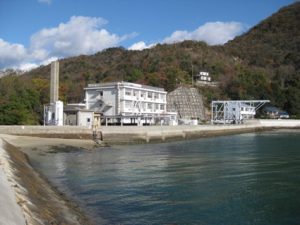The station was initially founded as a marine station affiliated with the old Faculty of Fisheries and Animal Husbandry, Hiroshima University in Fukuyama City in 1949. A freshwater station was also founded in Kumano Town in 1961. Another marine station was built in Tomo Island in 1962. These three stations have been integrated into one fisheries laboratory in 1991, and then reorganized as the Takehara Station of the Setouchi Field Center affiliated with the Graduate School of Biosphere Science, Hiroshima University in 2003 together with the University Farm. The main building has three stories, amounting to 1,121 m2 in total floor space. Outdoor and indoor tanks are supplied with filtered clean seawater. There is a research vessel with an engine (2.2 t, for up to 13 passengers). The following instruments and other equipment are available: biological collection gears, CTD, diving tools, deep freezers, SEM, etc. Well-preserved estuaries and seagrass beds exist in the vicinity around the Takehara Station. Recently, research involving zooplankters, symbionts, horseshoe crabs, algae, seagrass beds, and fish larvae have been conducted continuously by staff members. This station has been designated as an educational center for cooperative utilization by the Ministry of Education, Culture, Sports, Science and Technology, Japan since 2012.

Address: 5-8-1, Minato-machi, Takehara, Hiroshima 725-0024, Japan E-mail: takeemon@fishlab.hiroshima-u.ac.jp HP: http://fishlab.hiroshima-u.ac.jp
